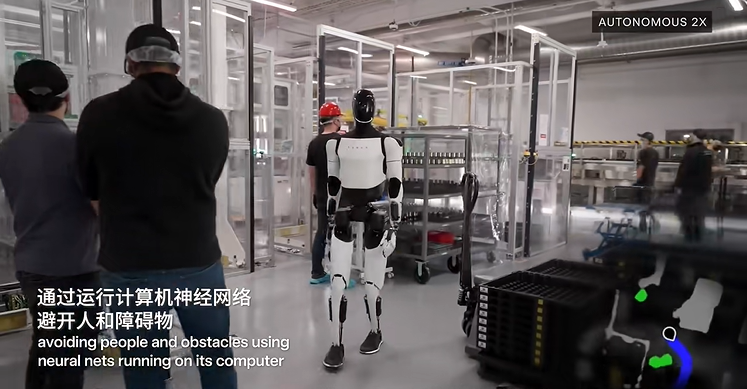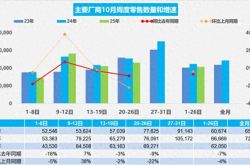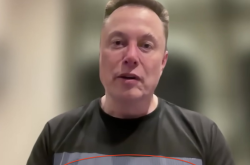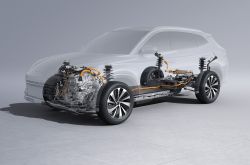Behind the Half Marathon of Humanoid Robots: A Bold Assertion of 'Silicon-Based Life'
![]() 04/23 2025
04/23 2025
![]() 629
629
Recently, the hashtag #HumanoidRobotMarathon# surged on social media—not due to science fiction movies, but because real-life Iron Men are reshaping human perception with their 21-kilometer 'tumbling scenes'.

Tiangong Ultra Robot Crosses the Finish Line
With a time of 2 hours, 40 minutes, and 42 seconds, Tiangong Ultra emerged victorious, claiming the title of the world's first humanoid robot half marathon champion. Despite multiple falls and battery changes during the race, its successful completion captivated netizens.
Nicknamed by netizens as a 'large-scale wrestling event for silicon-based life', this event not only stripped away the veil of the humanoid robot industry but also served as a barometer for industrial competition.
21km Half Marathon: A 'Stress Test' for Technological Boundaries
The 21.0975-kilometer course featured pits, cracks, steep slopes, and turns, requiring approximately 250,000 precise joint movements. This demanded dynamic balance, precise power distribution, and long-lasting endurance from the robots.
Each technology corresponds to specific future applications, and every breakthrough and improvement encapsulates the hard work and dedication of technical personnel. For this reason, many believe that 'participating is success, and finishing is heroism'.
However, current mainstream humanoid robots only have an endurance of 2-4 hours and require battery changes midway. High-load motor operation is also prone to overheating, increasing the risk of joint wear.
Compared to similar events or tests in other countries, which are either indoors or span just a few kilometers, the difficulty of this completed race is unprecedented globally.
Clearly, this is a rigorous test for embodied intelligence technology and a new starting point for the industry's future.
On race day, the first Tiangong Ultra robot to cross the finish line stood 1.8 meters tall and weighed 52 kg. It changed batteries three times during the race, fell once, and maintained a pace of about 7 to 8 kilometers per hour.
Tiangong Ultra's research and development enterprise is the Beijing Humanoid Robot Innovation Center, jointly established by leading robot industry enterprises and institutions such as UBTECH, Beijing Capital Machinery and Electronics Holding, Xiaomi Robotics, and Yizhuang Robotics.

Songyan Power's N2 Robot
The second and third finishers were both N2 robots from Songyan Power. Unlike Tiangong's 1.8-meter height, the N2 stands at 1.2 meters and weighs about 30 kilograms. It stood out with features such as wearing athletic running shoes, a high-frequency changing running posture, and independent running.
Every step, from precise joint movement to bionic gait iteration, from rapid battery replacement to anti-fall algorithm upgrades, reflects the trajectory of technological breakthroughs. The championship of Tiangong Ultra and the rise of N2 robots confirm domestic enterprises' progress in hardware design and algorithm optimization.
However, the product shortcomings exposed during the event also point to the industry's direction. For instance, endurance issues, thermal management shortcomings, and insufficient coupling between hardware and algorithms, which easily lead to imbalance, indicate that this 'silicon-based life' still needs further refinement.
The coexistence of technological advancements and shortcomings reveals the deep-seated competition within the humanoid robot industrial chain. This 'stress test' drives technological iteration through extreme scenarios, providing the industry with real data and improvement directions, and shaping the future of this multi-billion-dollar race.
Competition in the Multi-Billion-Dollar Race: Who Will Dominate the Industrial Chain?
While robots on the track are still 'wrestling' with gravity, competition within the industrial chain has quietly expanded to a broader battlefield.
From Tesla's global mass production plans for Optimus to the collaborative demonstration production line established by UBTECH and BAIC BJEV; from breakthroughs made by LHD Harmonic Drive and Keli Sensing in core components to the entry of car companies like XPeng and GAC into the field, a battle for technological standards, scenario definitions, localization competition, and ecological discourse power has commenced.
The humanoid robot industrial chain is divided into three major segments: upstream components, midstream body manufacturing, and downstream applications. The localization rate of core components in the upstream segment has surpassed 70%.
From a cost perspective, the supply of core components is crucial for the future large-scale development of the robot industry. The three core components of humanoid robots—reducers, servo systems, etc.—account for over 70% of the total cost. High costs remain one of the key factors hindering the widespread adoption of humanoid robots.
Among the core components, the reducer acts as a bridge between the power source and the actuator, matching rotational speed and transmitting torque; the servo system, also known as the following system, is a feedback control system used to accurately follow or reproduce a specific process.
With the rapid development of industrial automation, robotics, new energy vehicles, and other fields, domestic enterprises have made significant progress in key areas such as precision reducers, gear reducers, six-dimensional force sensors, joint torque sensors, etc. Listed enterprises like Zhongda Lide, LHD Harmonic Drive, Double Ring Transmission, and Inovance Technology have further expanded their production capacity and technological advantages with the support of the capital market.
In the midstream body manufacturing segment, with the gradual maturation of artificial intelligence technology and the rapid growth of the robotics industry, the global humanoid robot industry has entered a golden era, with the market size showing a rapid upward trend.
The global humanoid robot industry was valued at approximately USD 3.4 billion in 2024, marking a 57.41% increase from the previous year. In 2025, it is projected to reach USD 5.3 billion, and USD 20.6 billion by 2028.
Specifically, Tesla's Optimus and UBTECH's Walker S have led the way in mass production. Tesla anticipates producing 50,000 to 100,000 humanoid robots in 2026, with public access in 2027, gradually penetrating more industries. Next are the cross-border ventures of car companies. XPeng, GAC, Xiaomi, etc., are accelerating technology transfer relying on automotive manufacturing scenarios.
Overall, behind the 70% localization rate in the upstream segment, enterprises like LHD Harmonic Drive and Inovance Technology are reshaping the global supply landscape of precision components; in the midstream segment, Tesla and UBTECH's mass production plans, alongside the cross-border entries of XPeng, GAC, and Xiaomi, are driving the cost curve downward; while the explosive potential of downstream industrial and medical scenarios paves the way for commercialization.
From the localization breakthrough of reducers to the large-scale competition in body manufacturing, the gears of the humanoid robot industrial chain are accelerating.
From 'Wrestling Aesthetics' to 'New-Quality Productivity': The Future of Humanoid Robots Has Arrived
If we consider the 'wrestling aesthetics' of the marathon track as a footnote to technological evolution, then the leap from the laboratory to the factory, from the racecourse to the home, is the ultimate proposition of humanoid robots as 'new-quality productivity'.
They must not only conquer gravity on a 21-kilometer track but also prove their economic viability and irreplaceability in industrial assembly lines, nursing wards, and family living rooms.
As policy dividends, capital waves, and rigid scenario demands converge, this revolution of 'steel awakening' is roaring from the depths of the industrial chain.
Despite the accelerating maturity of humanoid robot technology, given the challenges of high costs, insufficient scenario adaptability, and lack of standardization, the industry may need to follow a gradual path of 'B-end industrial → B-end commercial → C-end household'.

Image source: Tesla official
In B-end industrial scenarios, humanoid robots are expected to prioritize landing in new energy vehicle manufacturing, undertaking semi-flexible tasks like handling and quality inspection. At this stage, Tesla's humanoid robot Optimus has entered its factory for trial operation; UBTECH's humanoid robots have also entered the production lines of BYD and Geely Automobile.
Furthermore, with the growing elderly population, the demand for elderly care across society has become more diverse and high-quality. Many 'companion robots' have already been tested in nursing homes.
In B-end commercial scenarios, humanoid robots have also made breakthroughs in scenarios such as smart grid full-scenario operation and maintenance, clean energy nuclear power plant operation and maintenance, automotive parts research and development and production, and smart elderly care.
This verifies their feasibility in practical scenarios like disaster relief, inspection, and companionship, laying the groundwork for the practical development of the humanoid robot industry.
Then there are C-end household scenarios. The increasing aging population has spurred greater demand for home care. Currently, Japan and Europe have already piloted service robots. Taking Skylark, Japan's largest table service chain restaurant, as an example, the restaurant uses about 3,000 cat-eared robots to deliver meals to customers.
Furthermore, products like Xiaomi's CyberOne and Leju's 'Kuafu' are actively exploring educational and entertainment functions.
In retrospect, this 'wrestling aesthetics' of 'silicon-based life' was originally a stress test for technological evolution. However, the championship of Tiangong Ultra and the counterattack of Songyan Power's N2 demonstrate the domestic technology's breakthroughs from joint movement to algorithm optimization, while also uncovering unavoidable 'technological scars'.
The competition within the industrial chain extends beyond the racecourse. In the upstream segment, LHD Harmonic Drive and Inovance Technology rewrite the precision component landscape; in the midstream segment, Tesla and UBTECH accelerate mass production; in the downstream segment, industrial inspection and elderly care scenarios pave the way for commercialization, and everything progresses in an orderly manner.
When humanoid robots learn to screw on assembly lines, deliver medicine boxes in nursing homes, and teach children to recite poems in living rooms, this technological marathon will eventually reach the next stop of intelligent civilization.
Source: Pinecone Finance








